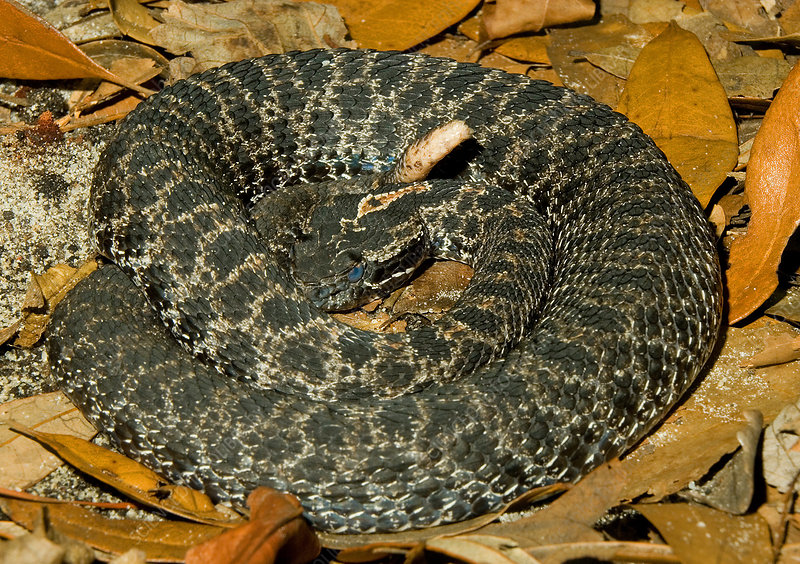ANIMAL: Dusky Pygmy Rattlesnake Sistrurus barbouri Type of Animal: Viper Habitat: Canal banks running through marshes/prairies, swamps, marshes, flatwoods, prairies, areas near lakes/ponds/rivers, creeks, sandhills, scrub pinewoods, mixed forests, longleaf pine-wiregrass forests, xeric uplands, woodlands, floodplains, hardwood hammocks, palm hammocks, field edges, palmetto hammocks Location(s): Extreme S South Carolina, Georgia, Florida, S Alabama, S Mississippi, Louisiana Appearance: Rounded dorsal spots, heavily flecked or mottled w/ black/dark brown whitish belly, grayish ground color w/ dark spots & some red spots, young snakes lighter than adults Food/Diet: Small mammals, birds, lizards, amphibians, smaller snakes (including members of own species), earthworms, insects, small fish, centipedes, spiders Status in Wild: Stable Conservation: Breeding in zoos and wildlife centers Lifestyle: Solitary Additional Info: Called: Male Female Young-Snakelet Group-Solitary Weight: Adult-3.5 oz Young-0.35 oz Gestation: 3 months Life Span: 15-20 years Body Length: Adult-1.5 ft Young-0.5 ft Main predators are crocodilians, snapping turtles, larger snakes, bobcats, foxes, coyotes, raptors, weasels, otters, bears, cats, dogs, mink, & raccoons. While venomous, deaths very rare due to small size & lack of potency. These snakes can be fairly defensive to make up for small size. Venom hemotoxic, targeting red blood cells & disrupting blood clotting. While only moderately venomous, these snakes tend to be one of most responsible for human snakebites in North America. Like all pit vipers, they use facial bits between eyes & nostrils to locate prey. Sexually mature at 2 years. Sometimes killed out of fear by humans. Play important role in keeping rodent populations down. These snakes often killed in rattlesnake round-ups. Fun Fact(s): Like other rattlesnakes, rattle segments made of keratin (same substance hair/nails made of). New segments added every time snake sheds. Rattle sounds like buzzing insect, leading to them sometimes being called buzzworms. Also known as Florida ground rattlesnake, southeastern ground rattlesnake, ground rattlesnake, hog-nosed rattler, pygmy rattler, pygmy ground rattlesnake, & small rattlesnake. Second part of scientific name in honor of American herpetologist Thomas Barbour.
